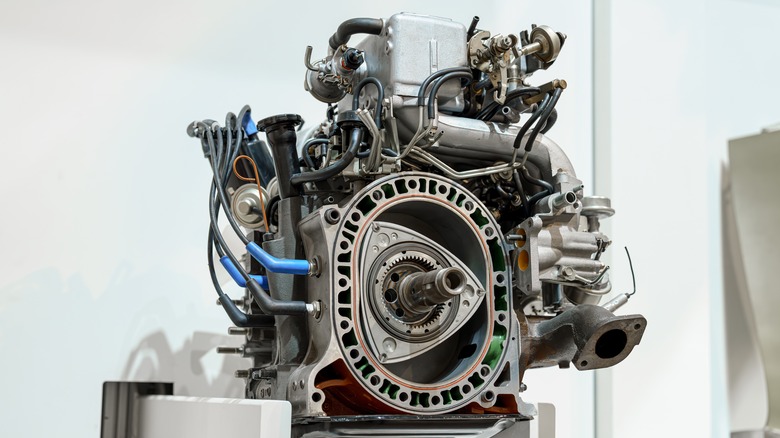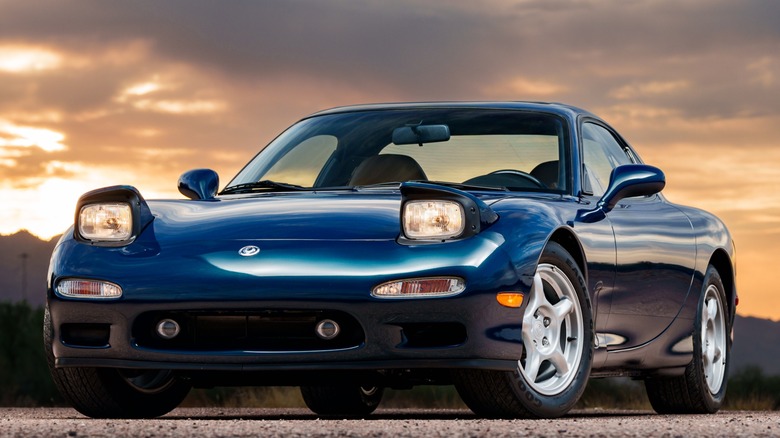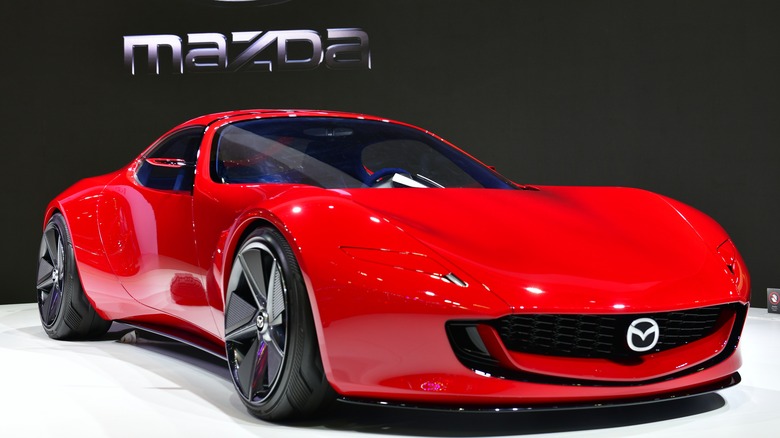This Is Why (Most) Automakers Stopped Using Rotary Engines
We live in an age of downsizing in the automotive world. Super and hypercar manufacturers like McLaren and Ferrari are ditching big-capacity, high-cylinder count engines in favor of boosted V6 and V8 engines. It's not just the high-performance brands, either — Toyota dropped the V6 from its evergreen Camry, and Honda did the same with the Accord, too.
So, if someone could develop a compact, light, and small-capacity engine which sported the outputs of larger engines, it would surely be the saving grace of the industry. Funnily enough that technology already exists, and it's called the rotary engine. One brand in particular has pioneered rotary technology for decades, Mazda, by developing and incorporating rotary engines primarily into its celebrated sports models over a number of decades. So why aren't other automakers singing the praises of rotary engines, and why isn't the industry adopting the technology en masse? The reasons are quite simple, and unfortunately it largely boils down to reliability concerns, in addition to emissions-related problems.
Rotary engines pose unfortunate reliability and efficiency concerns for modern automakers
Despite having been successfully rolled into production of various models, such as the RX-7 and RX-8 Mazda sports cars, the rotary engine as a design does sport some inherent flaws. First of all, it relies heavily on mechanical competence from the driver — and that's not something that can be relied upon. This is because rotary engines are designed to burn oil, due to the fact they feature oil squirters within the intake manifold, in addition to injectors which feed oil into the combustion chamber. Naturally then, oil levels do drop. If owners don't regularly check the engine's oil level with the dipstick, then the oil supply will run low or out completely, and that will only spell trouble. While owners would technically be to blame for this oversight, it's easy to imagine that automakers would fear the blame being thrown their way, and a poor reputation for reliability is something best avoided.
Secondly, achieving clean emissions can be troublesome with rotary engines. Due to the shape of a rotary engine's combustion chamber, these engines perform particularly poorly when it comes to thermal efficiency. A result of this is that, when compared to traditional engine designs, a lot of unburnt fuel gets spat out of the exhaust. Couple this with the aforementioned oil-burning issues, and it's clear to see why automakers would steer clear of rotary engines from an efficiency standpoint.
Do rotary engines still have a future?
The above reasons are largely why rotary engines are all but dead and buried. Die-hard rotary fans do still exist, and with halo models such as the banned Le Mans winning Mazda 787B race car, it's understandable that some will still appreciate the tech. However, there hasn't been a rotary-powered car in production since the demise of the RX-8.
Until, that is, Mazda re-introduced the rotary engine — but with a twist. Instead of solely relying on rotary power when debuting the new MX-30 REV, Mazda installed an 830cc rotary engine to work alongside a 17.8kWh battery pack, and 167 bhp electric motor. The rotary engine is used to charge the battery pack, and is in effect a range extender. Mazda also revealed that its exciting Iconic SP Concept would use a similar powertrain, although one which pushes out heaps more power. As of yet, this design does still remain a concept, but it shows promise that there may still be space in the future for rotary power to make a comeback.


